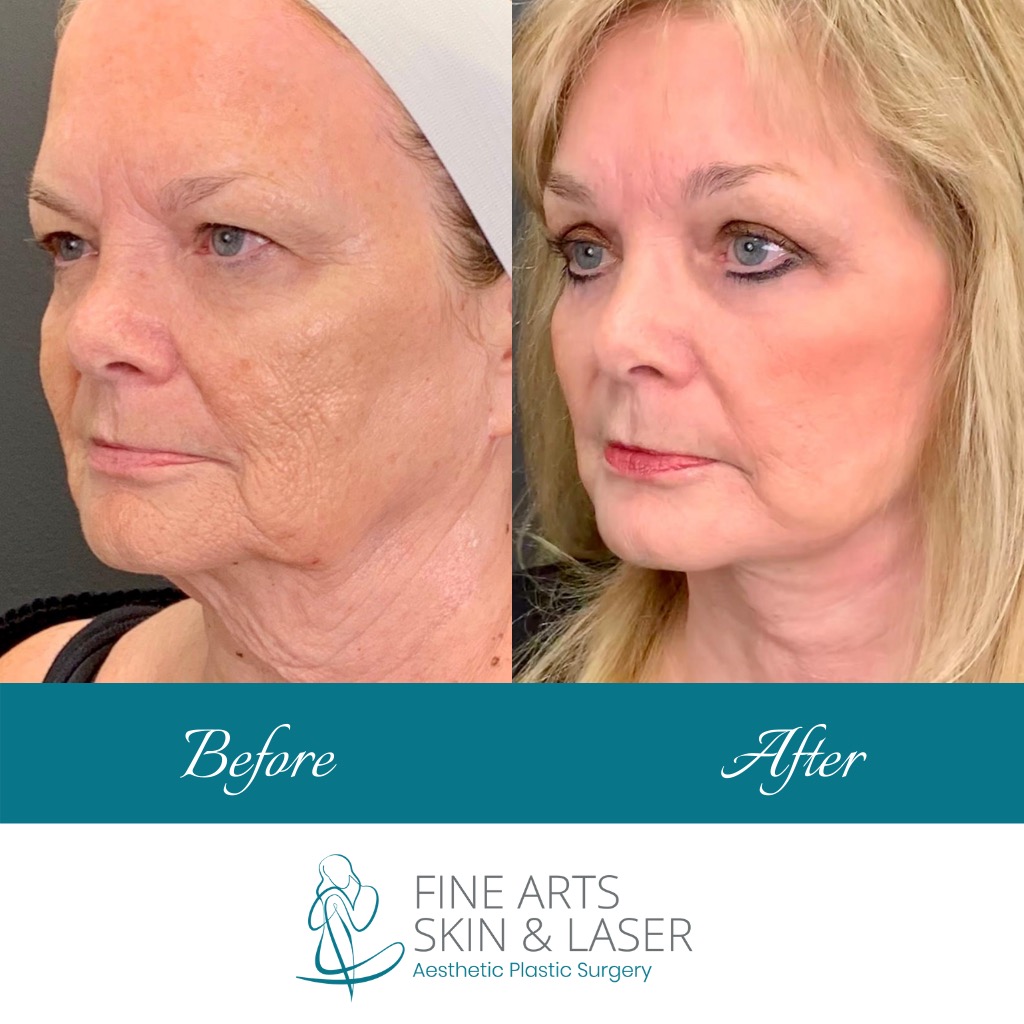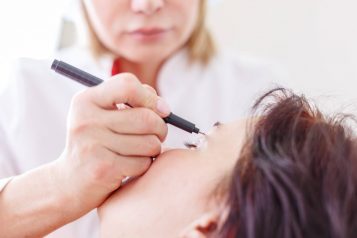Fine Arts Skin & Laser Facial Plastic Surgery exists today because of a unique blend of experiences and events in the life of Dr. David Hartman. He received his Bachelor of Science degree from Ohio University, graduating with high honors – summa cum laude, Phi Beta Kappa, and the National Dean’s List. He was one of only two college students in the state that year to receive the Governor’s Award for Exceptional Volunteer Service. Dr. Hartman is board-certified by both the American Board of Facial Plastic & Reconstructive Surgery, and the American Board of Otolaryngology-Head & Neck Surgery. He is a fellow of the American College of Surgeons (FACS). Haute Beauty expert Dr. Hartman highlights all the basics of a living-fat transfers/liposculpting procedure.
 Photo Credit: Shutterstock
Photo Credit: Shutterstock
For anyone who has ever wished they could slim down one part of their body while gaining volume to another, there is living fat transfer. This sophisticated procedure harvests living-fat cells from areas where they are plentiful—such as the abdomen or thighs—then introduces them to places where an increase is desired, such as breasts, face, and gluteal area (buttocks).
This body procedure requires considerable skill since the fat cells must be treated gently throughout every stage of the procedure, from removal to refining to implantation, so the fat grafting remains viable and healthy. Dr. Hartman is experienced in the delicate techniques necessary for successful fat transfer, adding volume to beautify breasts, face, and buttocks as desired.
How living-fat transfer works
First, we use tumescent, high-definition liposuction for fat transfer procedures, which involves the introduction of a sterile anesthetizing solution to the tummy area, thigh areas, and/or love handles are—the areas from which the living fat is to be sculpted out.
At this point, tiny, carefully placed (to be hidden by swimwear) incisions are made for the insertion of a very narrow, specialized tube-shaped wand called a cannula. The BeautiFill laser living-fat harvesting device is used to optimize the harvesting. Using a gentle back and forth motion and the fat-harvesting laser, fat is sculpted free with the wand and drawn into a special wash/filter receptacle.
Once successfully harvested by tumescent, high-definition liposuction, the fat cells are purified—a process that removes other fluids so that only the cells remain. These cells are then strategically injected in multiple layers into areas where more lift and volume are desired, such as for beautification of the breasts or buttocks or face. Because the tissue is your own, allergies and tissue rejection are not a concern. Your body welcomes its own cells, which should soon become established in their new home. Since they are living, they provide a stable, natural-looking boost.
Reasons to undergo living-fat transfers
The reasons clients choose to undergo living-fat transfers/liposculpting vary with every individual. Common themes center on a desire to correct/improve particular physical imperfections that negatively impact self-confidence and diminish relationship opportunities and/or career opportunities.

Photo Credit: Courtesy of Dr. Hartman
Benefits of the procedure
Living-fat transfers offer a unique triad of advantages:
1. Living-fat transfer restores/enhances desired volume to the breasts, butt, and face “naturally” – without implants to yield soft, smooth, integrated volume without artificial fillers or implants.
2. Harvesting the living-fat requires removing/liposculpting fat from areas of our bodies where we would look and feel better with less fat – which could be tummy area, thighs, bra roll, waist area, under the upper arms, or even under the chin.
3. Living-fat transfer/liposculpting cases are done with the client comfortably awake, “sipping” on laughing gas (nitrous oxide). Comfortably awake procedures provide better value to the client, are safer, and result in quicker, easier recovery – more often than not – returning to daily routines the next day.
Recovery after fat transfer
The donor and recipient areas will be somewhat sore in the days following the fat transfer, and some bruising and swelling will be apparent. However, patients are asked to resume light activity the very next day. Most of our clients return to their job/daily routines by the 2nd or 3rd day after the procedure. A total return to strenuous exercise and work should generally wait until 2 or 3 weeks have passed. Follow-up appointments are necessary for incisions. Although they are minimal and well hidden, they are routinely treated with an incision-blending laser to further help make them be indistinguishable in most cases.
For more information, visit Dr. Brian A. Levine's social media:

























